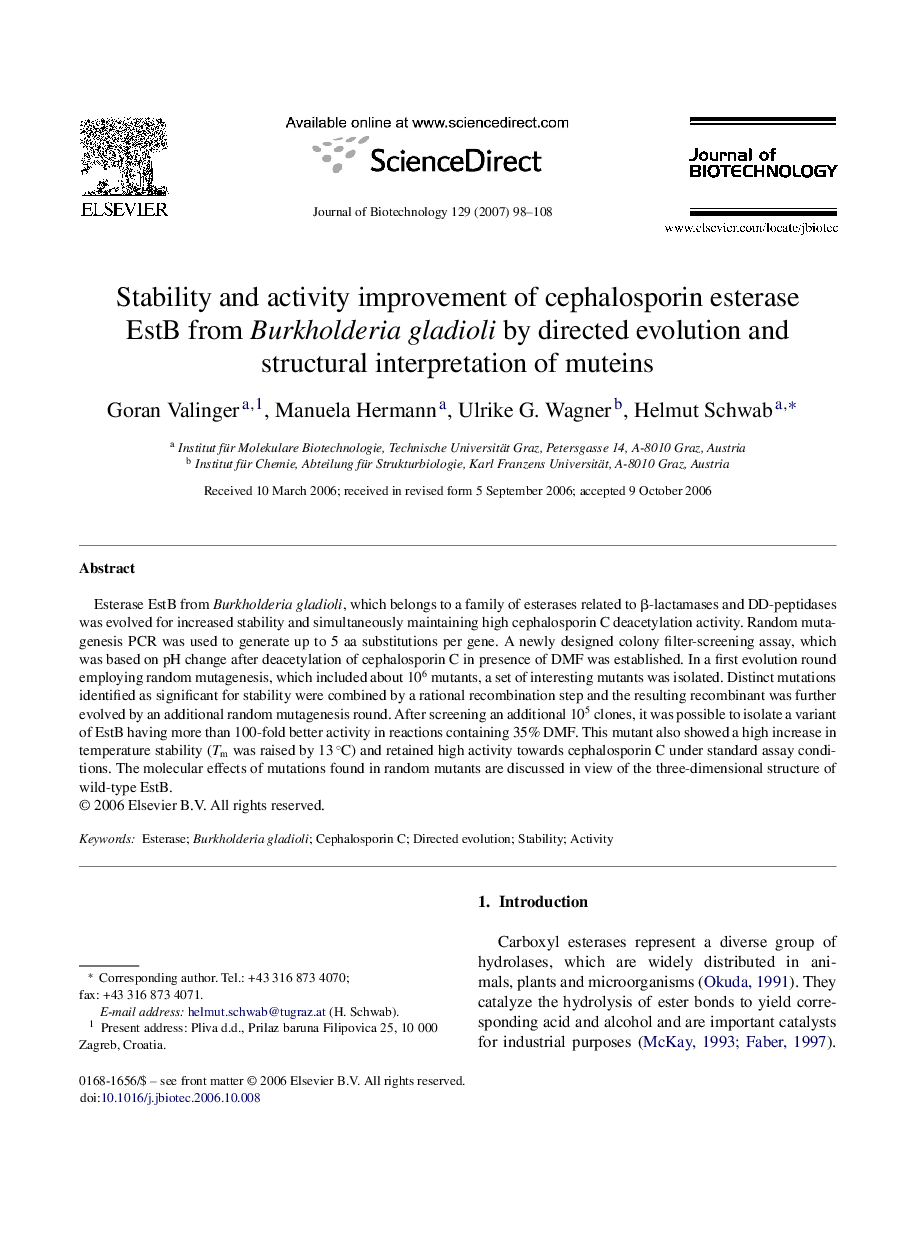| Article ID | Journal | Published Year | Pages | File Type |
|---|---|---|---|---|
| 25257 | Journal of Biotechnology | 2007 | 11 Pages |
Esterase EstB from Burkholderia gladioli, which belongs to a family of esterases related to β-lactamases and DD-peptidases was evolved for increased stability and simultaneously maintaining high cephalosporin C deacetylation activity. Random mutagenesis PCR was used to generate up to 5 aa substitutions per gene. A newly designed colony filter-screening assay, which was based on pH change after deacetylation of cephalosporin C in presence of DMF was established. In a first evolution round employing random mutagenesis, which included about 106 mutants, a set of interesting mutants was isolated. Distinct mutations identified as significant for stability were combined by a rational recombination step and the resulting recombinant was further evolved by an additional random mutagenesis round. After screening an additional 105 clones, it was possible to isolate a variant of EstB having more than 100-fold better activity in reactions containing 35% DMF. This mutant also showed a high increase in temperature stability (Tm was raised by 13 °C) and retained high activity towards cephalosporin C under standard assay conditions. The molecular effects of mutations found in random mutants are discussed in view of the three-dimensional structure of wild-type EstB.
